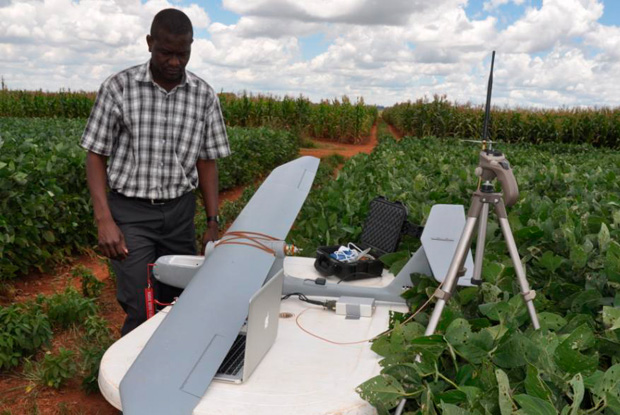Skywalker: reflectance spectroscopy for maize breeding
Submitted by ianm on 9 April 2013 - 9:32am
An international project led by Josep Lluís Araus, professor from the Department of Plant Biology of the UB and head of the Consolidated Research Group on Ecophysiology of Mediterranean Agriculture, is designing a low-cost, unmanned aerial vehicle which helps to select the maize varieties which are best adapted to adverse environmental conditions. Constraints in phenotyping capability limit our ability to understand the genetics of quantitative traits, especially those related to harvestable yield and stress tolerance. In particular, phenotyping under real environmental conditions remains the bottleneck for future breeding advances.
Maize is the most consumed cereal in Sub-Saharan Africa and Latin America, widely cultivated under varying temperatures, precipitation and soil types. Currently, about 77% of maize production in developing countries is consumed by humans. Drought and poor soil fertility are the leading production constraints in most maize farming systems. Reduction in maize yield caused by climate-related stress may increase with climate change. So, development of new technological phenotyping platforms at affordable cost is urgently needed to strengthen maize breeding and agriculture in developing countries.

Skywalker is an aerial phenotyping platform; a remote-controlled plane with an advanced flight control system which does not require experience of piloting. Spectral (visible and near infrared) reflectance and thermal imagery cameras have been fitted to the wings, which allow the evaluation of crops’ growth, temperature and available soil water of large numbers of maize varieties in only a few minutes. This data will be used to improve the efficiency of maize breeding and speed up the development of drought and low-nitrogen tolerant maize varieties for some of the poorest farmers in the world.
The plane has a range of 30–45 min, and can fly at over 600 m with an average speed of 45 km h–1. Take-off and landing, as well as flight plan, can be automatically programmed ahead of time.
The first prototype of the aerial platform was handed over in February to those in charge of the South Africa Office of CIMMYT, in Harare (Zimbabwe). It is planned to provide a second platform to Peru’s National Institute for Agronomic Research (INIA).
Comments
graemeb
23 Apr 2013
hi Ian,
I would like a good photo of the Skywalker system for my talk in Montpellier. How do I get hold of one?
Thanks Graeme
Permalink